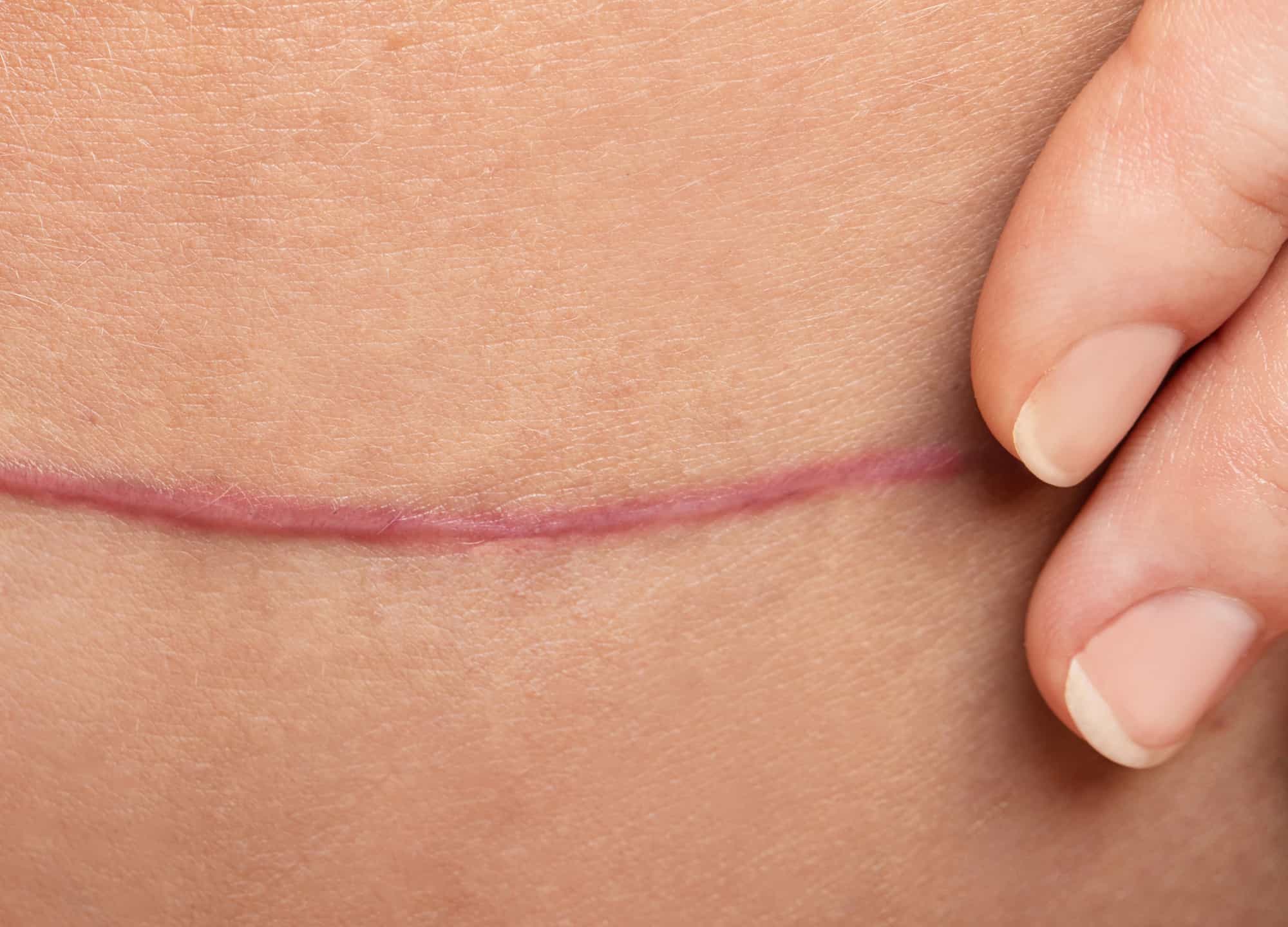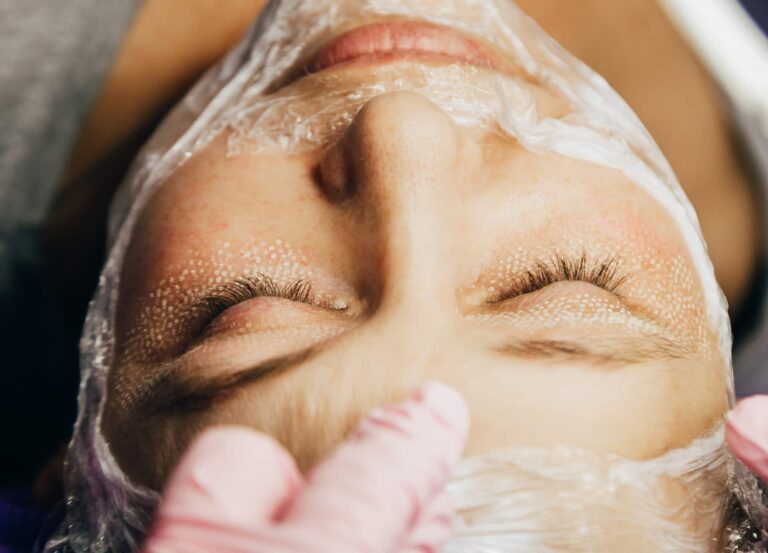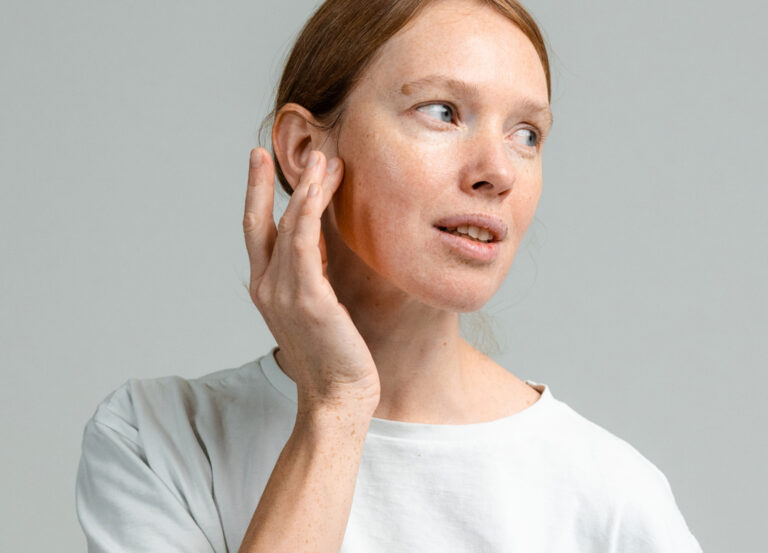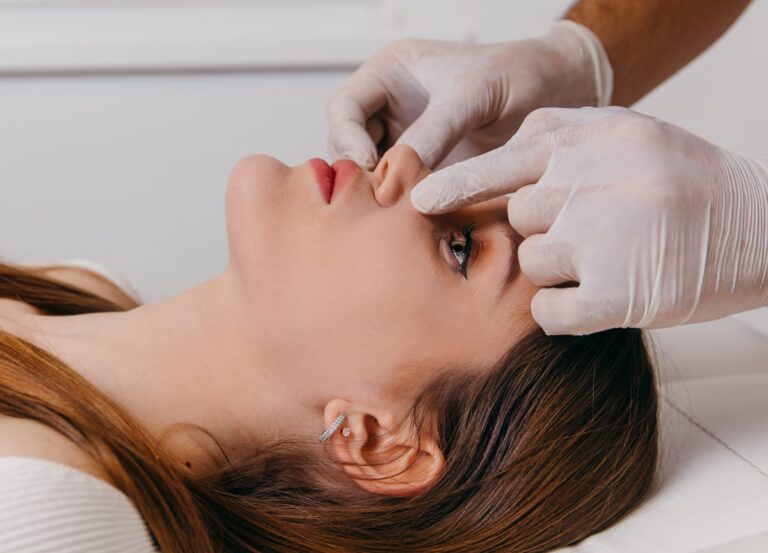Featured experts
Dr. Lyle Leipziger, a board-certified plastic surgeon in Great Neck, New York
Dr. Renata Khelemsky, a facial plastic surgeon in Brooklyn, New York
Dr. Carl Truesdale, a double board-certified facial plastic surgeon in Beverly Hills, California
Dr. Norman Rowe, a board-certified plastic surgeon in New York City
You researched. You vetted. You finally went through with the surgery you’ve been thinking about—only to find that it left behind a pretty gnarly scar. Plastic surgery can be a huge investment of both time and money, making it all the more discouraging when you’re dealing with visible, dramatic, or just unexpected scarring once the incision has healed.
Scars can be incredibly tricky to address, requiring pricey laser treatments or, worst case scenario, even scar revision surgery to make them less noticeable. (Plus these don’t always guarantee a big improvement.) That’s why most surgeons send patients home with a detailed, post-op scar protocol with best practices. But this doesn’t always account for mistakes—like reaching up to wash your hair after an arm lift—that could potentially open and mess with your incisions.
However, it’s important to remember that everyone scars differently. “Scarring is multifactorial, and different areas of the body may sometimes scar differently than others,” says Dr. Lyle Leipziger, a board-certified plastic surgeon in Great Neck, New York. “Everybody heals differently.” All to say, you could follow all the directions and do everything right and yet still end up with an obvious scar. But it’s worth preventing what you can, when you can. With that, consider these mistakes worth avoiding so your scar can heal seamlessly.
Lip lift scars: pursing your lips, yawning, removing surgical glue
Not all lip lifts are created equal. The subnasal lip lift, or bullhorn lip lift, is the most common technique; it removes skin just below and to the sides of the nose, with the scar tucked under the base of the nose. Then there’s the gullwing lip lift, or direct lip lift. “Among all cosmetic procedures, the direct lip lift raises the greatest concern about scarring, due to the highly visible location of the incisions,” says Dr. Renata Khelemsky, a facial plastic surgeon in Brooklyn, New York.
While scarring is a fact of the lip lift, certain things can exacerbate how it looks. First, while it’s tough to restrict your lip movement, any excessive motions—like pursing your lips or yawning widely, can put tension on the incision lines, which can make scarring worse, says Dr. Carl Truesdale, a double board-certified facial plastic surgeon in Beverly Hills, California. The only way to avoid it is to just take special care when you’re eating, yawning, talking, or otherwise using your mouth.
Not taking proper care of the wound can also exaggerate scars. “Not cleaning and keeping the incision moist will increase scabs and prevent the edges of skin having healing cells migrate across,” he says. Expect to apply an antibiotic ointment twice a day after two weeks. And don’t try to remove any surgical glue used to hold the stitches together; attempting to remove it yourself can interfere with the healing process and potentially make the scar more apparent.
Facelift scars: disturbing the earlobes, styling your hair
Facelift scars are usually hidden in strategic spots, like inside the hairline, around the ear, and in the creases of skin. “With proper closure, scarring can be minimal,” says Dr. Truesdale. But since the area at the base of the ear has the most tension, it can produce the thickest scar tissue if your surgeon doesn’t account for this.
Since the earlobes are temporarily numb after a facelift, one major mistake is doing anything that disturbs them—and we mean anything. For instance, Dr. Truesdale advises his patients to be extra careful when pulling shirts over their heads, “as this can inadvertently pull the earlobe away from neck incisions,” he says.
On top of that, you might want to put some of your usual beauty habits and appointments on hold. For the first three weeks, Dr. Truesdale advises his patients to avoid coloring their hair or even using heated styling tools, as both the chemicals and heat, respectively, can impair healing or irritate the incisions.
Arm lift scars: lifting your arms, not using silicone cream or tape
An arm lift is one of those procedures for which a visible scar might be unavoidable, and this is why “the possibility of a visible scar has to be measured against the need to remove excess skin,” says Dr. Norman Rowe, a board-certified plastic surgeon in New York City. If you don’t have a lot of skin to remove, there’s a chance the incision can be hidden in the crease of the armpit. But if there’s a larger amount of skin that needs to be lopped off, then the scar can reach from the armpit crease down the arm, “sometimes to the elbow, with scars placed on the inside of the arm,” he says.
Wherever you get your scar, lifting your arms too high and too soon can put pressure on the armpits, which allows the incision to break down. So if you plan to wash your hair, ask for help from a friend—and follow your doctor’s orders for how soon you can lift your arms above your shoulders. (For incisions near your armpit, that’s usually around four weeks.)
Another mistake is slowing down or stopping your use of silicone creams or tapes, which Dr. Rowe swears by. “I find that they help flatten scars and lighten them up,” he says, recommending that you start them three to four weeks after surgery, or whenever your stitches are removed. Since arm lift scars can take up to a year to mature, keep applying these products even once the incision heals.
Breast augmentation scars: working out too soon
Breast augmentation scars can appear in a few places, such as in the armpit, which some surgeons mean by a “scarless breast augmentation”; on the lower portion of the areola; or beneath the breast. “The incision in the armpit is nearly invisible and can only be seen when someone is raising their arm,” says Dr. Rowe. So the same goes for the other placements—and when they heal properly, all have minimal scarring, he says.
However, certain things could cause the incision to open up—namely, working out too soon. (Vigorous activity, like running, should be off limits for four weeks post-op.) In that case, “all can be visible if the scar widens,” says Dr. Rowe. However, so long as you avoid this, there’s not much that will widen a scar besides good, old genetics.
Tummy tuck scars: not applying sunscreen and silicone
Tummy tuck scars are no joke. “The incision and scar for tummy tuck is generally placed from the hip bone to the pubic bone to the opposite hipbone,” says Dr. Rowe. “This is generally covered when the patient wears underwear.” (There’s another, separate incision around the belly button—but that’s usually placed deep in the belly button, to make it inconspicuous, he says.)
Really, the size and overall appearance of your tummy tuck scar is a matter of the surgeon you choose, since the placement is key to keeping it hidden. But worth remembering is that scars can take a full year to achieve their final appearance, says Dr. Rowe, which is why it’s imperative to keep up with a topical silicone regimen; stopping after a few months can mean that they become more obvious over time.
Also, if your scar is in a position where part of it is visible from beyond a swimsuit, make sure to slather on enough SPF. “Patients should protect their scars from the sunlight for the first year, because sunlight causes scars to discolor,” says Dr. Rowe.











